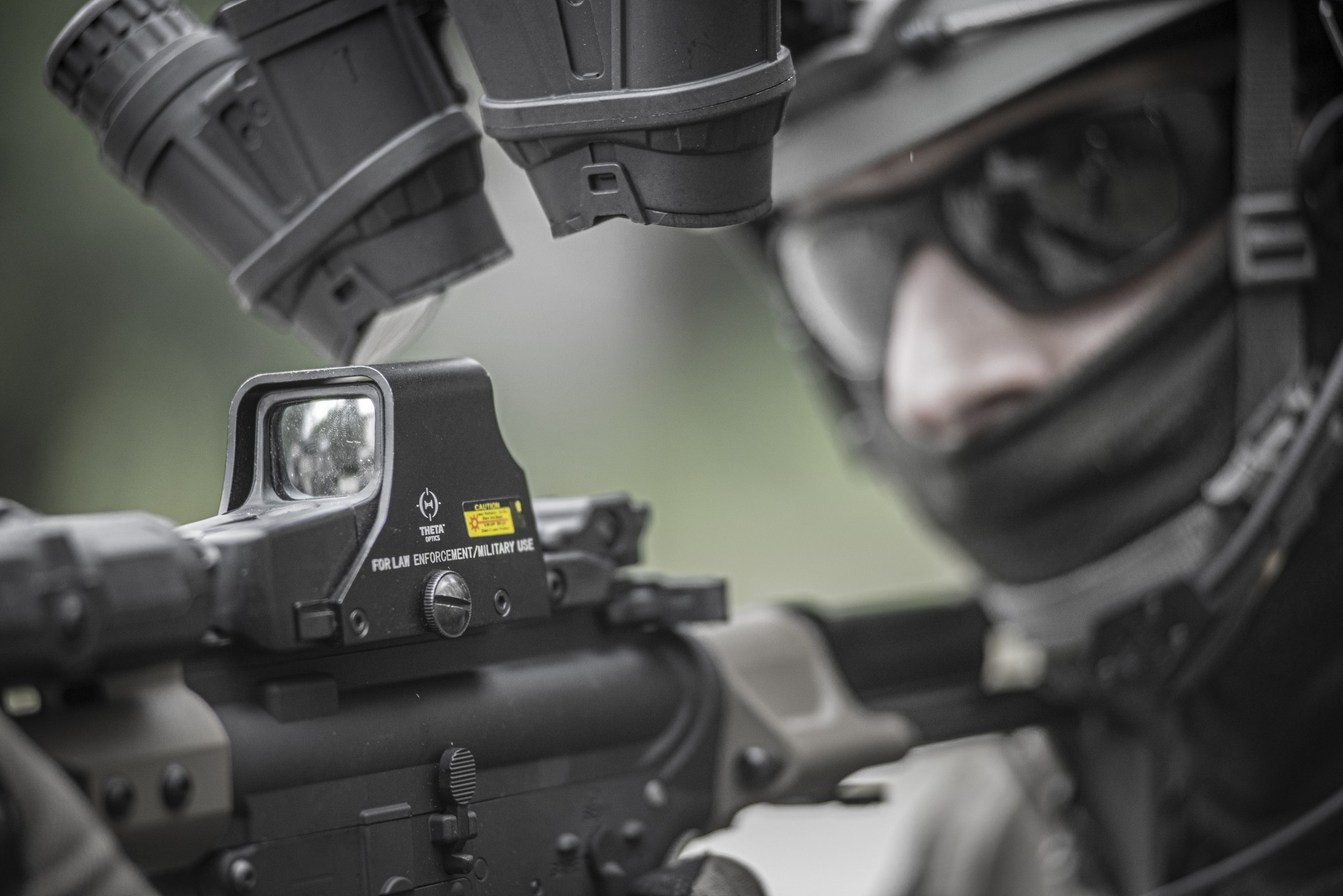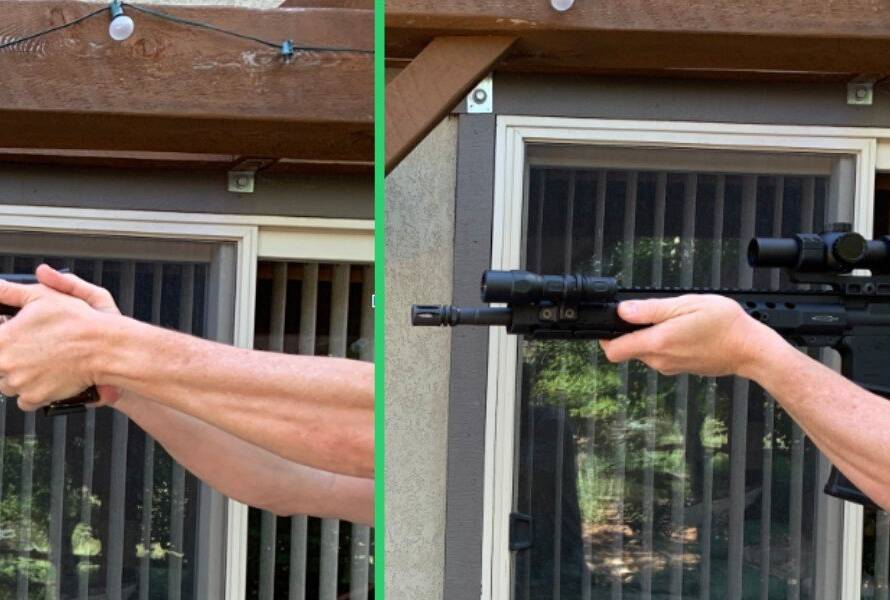You can improve the accuracy of your aim with a new scope.
A tactical optic is a device that provides visual assistance when aiming for a target. It’s also called a scope or sight. The characteristics of a scope can range from straightforward to complex.
The invention of the rifle enabled people to shoot farther than ever before. However, it can prove challenging to see targets that are far away. As with other inventions, necessity inspired the creation of the tactical optic.
For a guide to tactical optics, read on.
The Parts of a Firearm Scope
When you’re shopping for a new scope, it helps to understand them in more detail. All tactical optics share a few primary components. These components include the:
• Adjustment turret
• Eyepiece
• Lens coating
• Objective lens
On a scope, the eyepiece faces your eye. You’d look through the eyepiece to line up a target.
Usually, an eyepiece is round. However, some manufacturers produce scopes with varying shapes.
Scopes also have an adjustable turret. It enables you to adjust the settings of the sight.
A weapon scope turret adjustment mechanism may range in design from a flathead screw to a complex handwheel system. You can use the mechanism to adjust the horizontal (windage) and vertical (elevation) movement of the turret.
A scope turret with lighting also allows you to adjust the intensity of illumination. Some scope turrets also enable you to adjust the parallax – more on that in a moment.
The objective lens faces the target. Usually, this lens is larger than the eyepiece. The size of the objective lens let’s as much light as possible light into the scope.
Finally, a scope typically features a lens coating to protect it from damage. A basic lens coating can consist of plastic or lacquer.
However, some lens coatings provide enhanced protection, such as shielding from ultraviolet light. Also, a high-end weapon scope may have a light-transmitting coating that enables as much light as possible to pass into the turret.
Top Technical Considerations for Tactical Optics
All tactical optics have two important characteristics – the field-of-view (FOV) and parallax. The field-of-view is what you see as you look through the scope.
Imagine that you have a scope with a 100-yard field-of-view of 10 feet. In this case, when you look at a target that’s 100 yards away, you’d have a field of vision that’s 10 feet wide.
The FOV will increase or decrease based on the magnification of your scope. As the prisms focus on a target that is farther away, the angle of magnification decreases. As a result, as you increase magnification, you’ll decrease your field-of-view.
The parallax is the alignment of the prism inside of your scope. It keeps your point of view aligned with your aim.
You can adjust the parallax in your scope to align your aim with your point of view. You’d accomplish this task by moving the mirrors in the weapon scope to offset any misalignment caused by the distance between the prisms inside of the turret.
This adjustment isn’t necessary for all scopes. Some scopes have a self-adjusting feature that corrects the parallax as you change the magnification.
Types of Scopes
Overall, there are three kinds of scopes – standard eye relief, long eye relief, and red dot. You’d find a standard eye relief scope on most rifles.
Manufacturers design standard eye relief scopes for use anywhere from two to six inches away from your eye. You never want a scope right against your eyes, unless you’re shooting a firearm with extremely light recoil.
A standard eye relief scope works well for a range of applications. You may find many firearm owners using one for anything from hunting to target practice.
You may hear someone refer to a long eye relief scope as a scout scope. A long eye relief scope is for a firearm with considerable recoil. Manufacturers make long eye relief scopes as short as possible to make them more convenient and maneuverable.
You may also find a long eye relief scope on a handgun. This kind of scope works well for a firearm that has heavy recoil, such as a large-caliber hunting rifle. Usually, you’d mount a long eye relief scope on the front of the action along the barrel.
A red dot tactical optic is a scope with an optical sight and a lens. In other words, the scope projects a pattern or dot onto a target.
The projection may consist of a dot, a series of dots, a crosshair, or a circle. It might also consist of a complex ballistic reticle – or a pattern of lines and markings designed for lining up a target. You can change the projection of more advanced scopes by simply pushing a button.
Choosing a Great Scope
There’s a wide range of scopes on the market. Choosing one among this vast selection can prove overwhelming.
Rather than focusing on scopes, start by thinking about your needs. For instance, if you’re a target shooter, focus on scopes suited for that purpose. In this instance, you need to consider the distance that you’d typically need to sight.
Alternatively, you may need a scope for hunting. In this case, you’ll need to think about what type of game you pursue as well as where you hunt.
As a rule of thumb, a scope with magnification of less than 10x works well for target and offhand shooting. A scope with a magnification greater than 10x typically requires support such as a bench or a prone posture.
Meanwhile, a 10x to 20x magnification scope may work well when using a full-scale rifle for longshots in an open area. By considering these fundamental scope characteristics, you can make it easier to narrow down your choices.
Choose a Trustworthy Scope Supplier
Now that you have a basic understanding of tactical optics, you can start your search for a new scope.
RKB Armory is your source for top-notch tactical optics. Whether you’ve purchased a new gun or outgrown your scope, you can trust us to provide you with a quality, reliable sight. We have a reputation for buying and selling used scopes that are dependable and affordable.
You can browse our inventory of tactical optics 24-hours a day, seven days a week, at your convenience. If you’d like to sell your scope, feel free to contact an RKB Armory representative using our convenient online form.






5 Comments